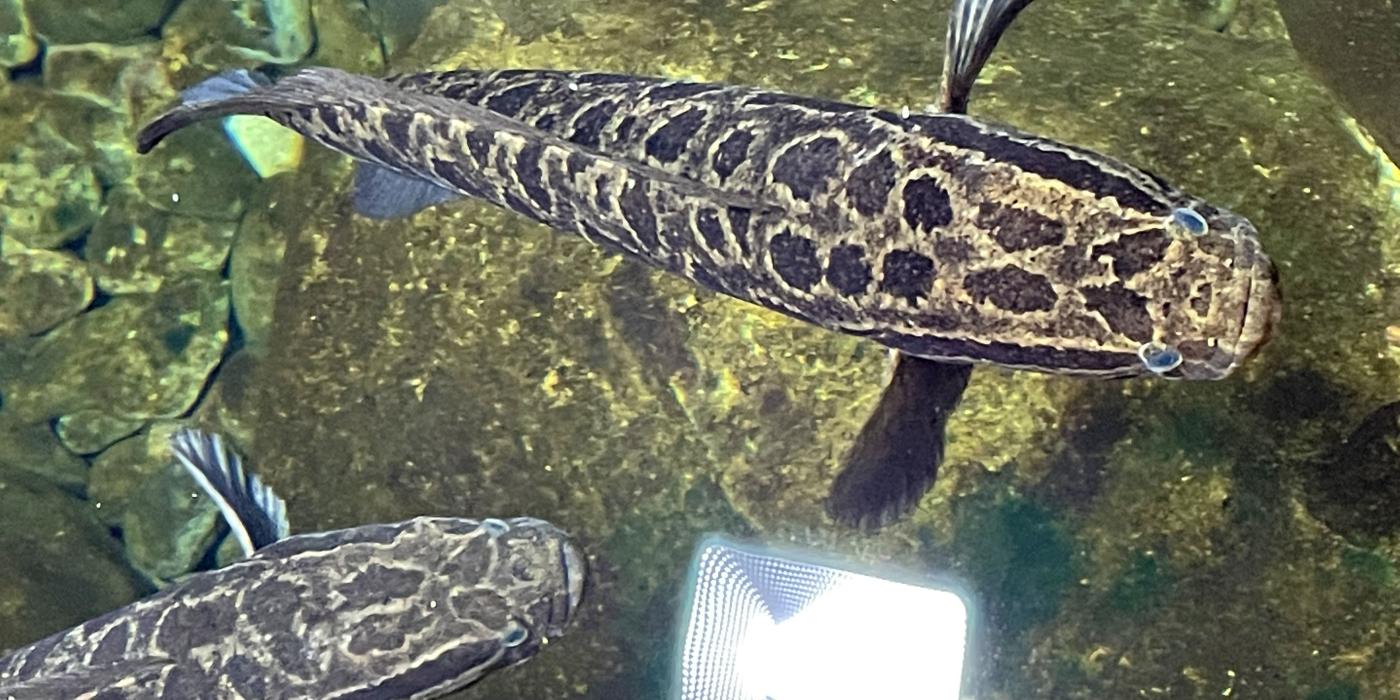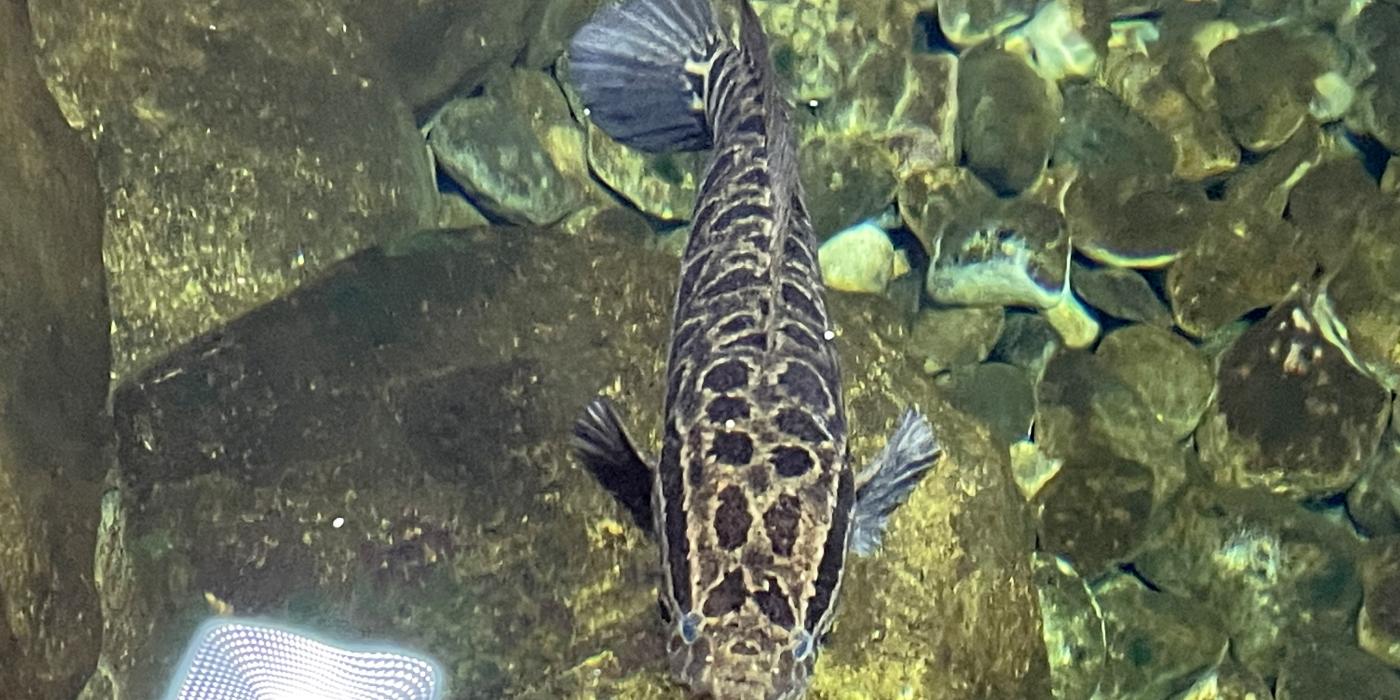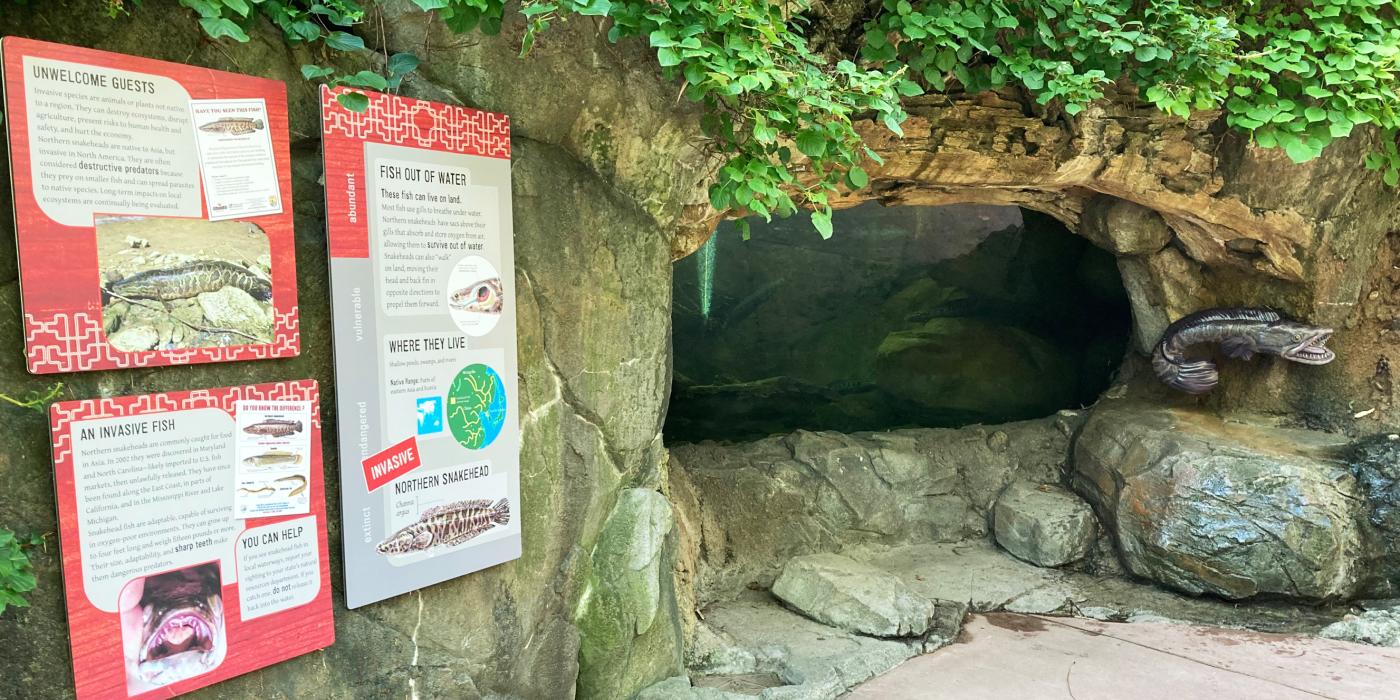Meet the Snakehead: A Fish That Can “Walk” On Land
With an aggressive attitude, an eager appetite for fish and the ability to “walk” on land, the northern snakehead fish is a powerful predator. Recently, Asia Trail keepers welcomed four snakeheads—one male and three females—into their care. Get acquainted with this aquatic species from assistant curator of giant pandas Laurie Thompson.
What is your favorite fact about snakeheads?
Snakehead fish have evolved to “walk” on land! They propel themselves forward by moving their head and back fin in opposite directions.
Underwater, a snakehead absorbs oxygen through its gills, just like other fish. On land, it can take a big gulp of air through its mouth and continue to breathe, thanks to a specialized chamber next to its gills. This enables it to survive for up to four days on land!
What do you enjoy most about working with them?
I’ve never worked with fish before, so taking care of them is all new to me! Feeding the snakeheads has been a fun and interesting experience. In the wild, they eat fish that are up to one-third their own body length, as well as frogs, beetles and dragonfly larvae. At the Zoo, we feed them mostly goldfish and crayfish. They will even eat worms off of a feed stick!
What are their personalities like?
The females often hunt for food together. When they notice keepers opening the door above the tank, they will swim up to the top and wait to be fed. Our most dominant female always eats first. Our only male seems quite shy and hides most of the time.
Got any tips for spotting them?
Snakeheads sport scales that are brown with dark, irregular blotches. If they aren’t swimming around when you first approach the exhibit, look closely at the bottom or in between the rock crevices—they are likely resting there!
What do you hope visitors learn from meeting these fish?
Our snakehead fish are ambassadors for their species, and they serve as an important reminder of why people should never release unwanted animals—especially non-native species—into the wild.
Snakeheads are native to Southern Siberia, China and North Korea, but they were first spotted in waterways around the Washington, D.C., area in 2002. It is likely snakeheads were imported from overseas, then unlawfully released.
With no natural predators to keep this aggressive, carnivorous fish in check, their populations have boomed. At the same time, populations of local frogs and fish that they prey upon have declined. Snakeheads are a prime example of how invasive species can upset the delicate balance of local ecosystems.
This story appears in the September 2021 issue of National Zoo News. Get animals in your inbox! Sign up to receive Zoo emails.
Related Species:




